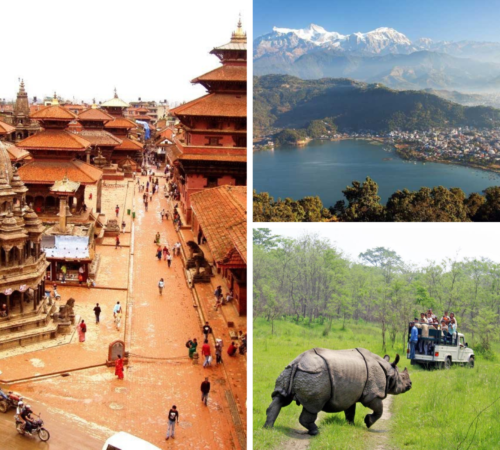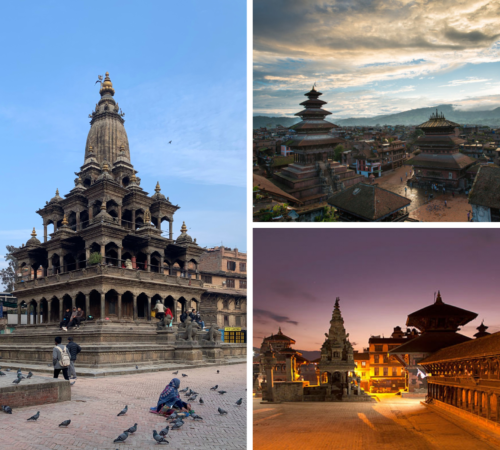Trip Facts
-
Duration
8 Days
-
Trip Start and End
Kathmandu Kathmandu
-
Difficulty Level
Moderate
-
Trip Area
Langtang Region
-
Maximum Altitude
4610m/15,124.67ft - Laurebina Pass
-
Best Season
September-November and March-May.
-
Meals
Full board (please check the details)
-
Accommodation
Hotels, Resorts, Homestay
-
Transportation
SUV
Highlights
- Gosainkunda Lake
- Panoramic Mountain Views
- Scenic Landscapes
- Wildlife Encounters
- Cultural Festivals
- Cultural Immersion
- Shortest 4500m+ and 15,000ft+ Trek
Trip Overview
The Gosainkunda Trek is a mesmerizing journey through the Langtang region of Nepal, known for its stunning landscapes, diverse flora and fauna, and rich cultural heritage. This trek takes you to the sacred Gosainkunda Lake, a revered pilgrimage site for both Hindus and Buddhists, nestled amidst the Himalayan peaks at an altitude of about 4,380 meters. The trek typically begins in Syabrubesi, following the Langtang River through lush forests, picturesque villages, and terraced farmland. As you ascend higher into the mountains, you'll encounter rhododendron and bamboo forests, cascading waterfalls, and panoramic views of snow-capped peaks. One of the highlights of the Gosainkunda Trek is reaching Gosainkunda Lake, a series of high-altitude alpine lakes believed to have been created by Lord Shiva's trident. Pilgrims from Nepal and India flock to the lakes during the sacred festival of Janai Purnima in August, adding a vibrant cultural element to the trek.
Aside from the natural beauty, the trek also offers opportunities to immerse yourself in the local culture. You'll have the chance to interact with Tamang and Sherpa communities, visit ancient monasteries and chortens, and learn about the traditional way of life in the Himalayas. The trek typically takes around 7-10 days to complete, depending on the starting point and itinerary chosen. Accommodation along the route ranges from basic teahouses to more comfortable lodges, providing trekkers with a cozy place to rest and refuel after a day of hiking.
Overall, the Gosainkunda Trek is a rewarding adventure that combines breathtaking mountain scenery, cultural immersion, and spiritual significance, making it a truly unforgettable experience in the heart of the Langtang region. Whether you're a seasoned trekker or a first-time adventurer, this trek offers something for everyone, leaving you with memories to last a lifetime.
Detail Itinerary
+ Show MoreArrive in Kathmandu, the capital city of Nepal.
Transfer to your hotel and check-in.
Spend the day exploring Kathmandu’s vibrant streets, bustling markets, and historic landmarks.
Overnight stay in Kathmandu.
Cost Includes
- Trekking Permits
- Transportation
- Accommodation
- Guide and Porter
- Meals
- First Aid Kit
Cost Excludes
- International Flights
- Visa fees
- Travel Insurance
- Personal Expenses
- Additional Services
- Alcoholic Beverages
- Extra Accommodation
- Unforeseen cost
Guidelines / Information
Trekking Permits:
Ensure you obtain the necessary permits for the trek, including the Langtang National Park entry permit and TIMS (Trekkers’ Information Management System) card.
Physical Fitness:
The Gosainkunda Trek involves several days of moderate to strenuous hiking at high altitudes. It’s essential to be in good physical condition and undertake some pre-trek training to prepare for the trek’s challenges.
Altitude Acclimatization:
Acclimatization is crucial to avoid altitude-related illnesses such as acute mountain sickness (AMS). Take your time to acclimatize properly by gradually ascending to higher altitudes, staying hydrated, and listening to your body.
Packing Essentials:
Pack appropriately for the trek, including sturdy hiking boots, warm clothing layers, a waterproof jacket, hat and gloves, sunscreen, sunglasses, a refillable water bottle, and basic first aid supplies. It’s also recommended to bring trekking poles for stability on steep and uneven terrain.
Weather Conditions:
The weather in the Langtang region can be unpredictable, with temperatures varying greatly depending on the season and altitude. Check the weather forecast before your trek and be prepared for changing conditions, including rain, snow, and cold temperatures, especially at higher elevations.
Accommodation and Meals:
Accommodation along the trekking route consists of basic teahouses or lodges offering simple rooms with shared facilities. Meals are typically provided at the teahouses and include Nepali and international dishes such as dal bhat, noodles, and soups.
Hydration and Water:
Stay hydrated by drinking plenty of water throughout the trek. While bottled water is available at teahouses, it’s more environmentally friendly to bring a refillable water bottle and use water purification tablets or filters to treat water from natural sources.
Responsible Trekking:
Practice responsible trekking by respecting the local culture, customs, and environment. Dispose of waste properly, including carrying out non-biodegradable items, and minimize your impact on the fragile mountain ecosystem.
Safety Precautions:
Follow safety guidelines provided by your trekking guide, including staying on marked trails, avoiding steep or unstable terrain, and being cautious around mountain streams and waterfalls.
Emergency Preparedness:
Be prepared for emergencies by carrying a fully charged mobile phone with local SIM card, a whistle or signaling device, a headlamp or flashlight, and emergency contact information for local authorities and rescue services.
FAQs
Gosaikunda is a sacred alpine lake located in the Langtang National Park of Nepal, revered by Hindus and Buddhists. It is believed to be the abode of Lord Shiva and holds deep religious significance, especially during the annual Janai Purnima festival.
The duration of the pilgrimage tour to Gosaikunda typically ranges from 6 to 10 days, depending on the chosen route, starting point, and pace of the trek.
The best time to visit Gosaikunda is during the dry seasons of spring (March to May) and autumn (September to November), when the weather is clear, and the trails are in good condition. Winter treks are possible but may experience snowfall and cold temperatures.
The Gosaikunda trek is considered moderately challenging, with steep ascents and descents, rocky terrain, and high altitude. Trekkers should be reasonably fit and prepared for varying weather conditions.
Trekkers need to obtain the Langtang National Park Entry Permit and the TIMS (Trekkers’ Information Management System) card for the Gosaikunda trek. Additional permits may be required for certain restricted areas.
Accommodation options along the Gosaikunda trek route include teahouses, lodges, and basic guesthouses in villages along the trail. Facilities may vary from basic to relatively comfortable, with shared rooms and common dining areas.
It’s advisable to drink purified or boiled water during the trek to avoid waterborne illnesses. Bottled water is available for purchase at teahouses, or you can use water purification tablets or filters to treat water from natural sources.
Basic medical facilities are available at some villages along the trek route, but they may be limited. It’s recommended to carry a first aid kit and any necessary personal medications. In case of emergencies, evacuation to Kathmandu may be required.
Essential items to pack for the Gosaikunda trek include sturdy hiking boots, warm clothing layers, rain gear, sunscreen, sunglasses, a hat, a sleeping bag, trekking poles, and personal medications. It’s important to pack light but adequately for the trek.






